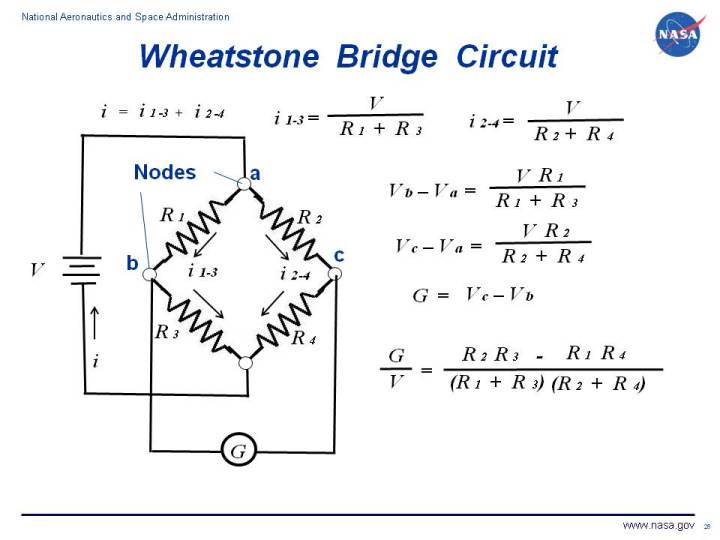Wheatstone Bridge Calculations
Examples: Let R1 be a precision 10kΩ potentiometer. With R2 = R4
= 10kΩ, and the unknown equal to 500Ω, the null
would be near the bottom of the pot adjustment range. However, if R4 = 1kΩ and R2 = 10kΩ, then with R1 adjusted mid-range to 5kΩ the modified
bridge equation becomes R3 = 5kΩ×(1kΩ/10kΩ) = 500Ω. So the bridge is nulled at
the midpoint of R1, where the adjustment is less sensitive.
Similarly, if
the unknown R3 were 200kΩ, it would be impossible to null the bridge for R2 = R4 = 10kΩ. But you could tu
ne a null if
R4/R2 were 100. So leaving R2 at 10k and
setting R4
= 1000kΩ (1MΩ) makes R4/R2 = 100. This makes R1 = 2kΩ to null the bridge for R3 = 200kΩ.
As a practical matter, 1MΩ is probably an upper limit for R4 because precision resistors above 1MΩ have problems. However, if a ratio greater than 100 were needed, the value of R2 could be decreased. In the second example above, R4 = 100kΩ and R2 = 1kΩ also give a ratio of 100 and would work
The dial scale
for the adjustable 10kΩ pot could look like that on the right. It is important to null the bridge between
1.00 and 10.00 if possible. A poor
choice of R4 and R2 could make the null between 0.00 and 1.00 or even between
0.00 and 0.1. In either case you would
lose setting precision. R4 and R2 should
be selected for the null to occur at a readable point on the scale.
Related Articles
Lesson meta keywords and meta description:

Write a public review